Putnam unveils rare ‘magic mirror’
The Putnam Museum and Science Center revealed a long-held, rare mystery during its gala — “Mysteries of the Museum” — on Saturday night, Feb. 24, 2024.
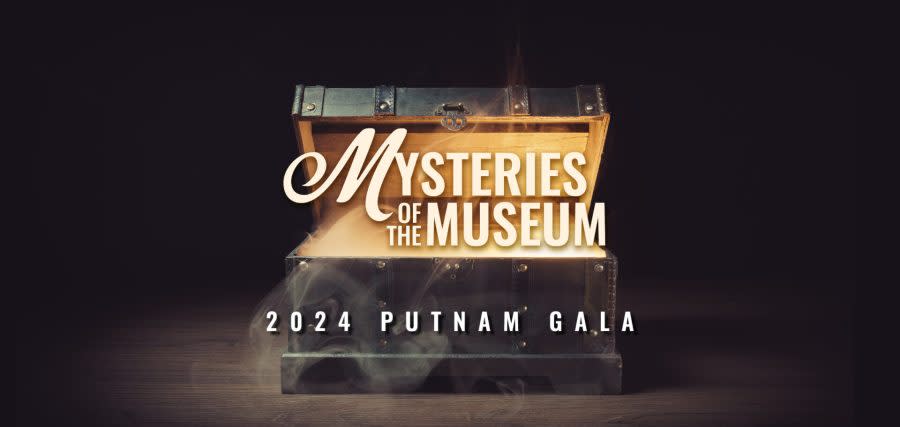
For over a century, the Putnam had a Japanese bronze mirror, one of only three known in the country, and Nora Moriarty, curatorial project coordinator, excitedly explained its history, discovery and authentication Saturday night during the Putnam gala, in the museum’s Giant Screen Theater.
The museum (1717 W. 12th St., Davenport), has a collection of over a quarter million objects from seven continents, collected over the course of 156 years.
“Imagine a small object, a relatively modest object, which seems at first glance, to serve an everyday function,” Moriarty said. The object was overlooked for years.
“This object is the result of meticulous craftsmanship,” she said. “This object is of a type that confounded 19th-century scientists. This type of object had been called miraculous and magic.”
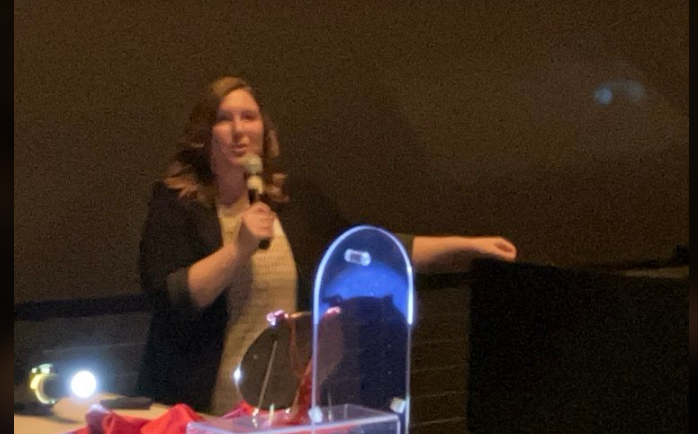
Moriarty displayed a 12-minute film about the “magic mirror,” which she narrated.
“There’s a secret hidden within the layers,” she said in the film, “It actually has the ability to project a reflection in its light an image that is wholly invisible to the naked eye.”
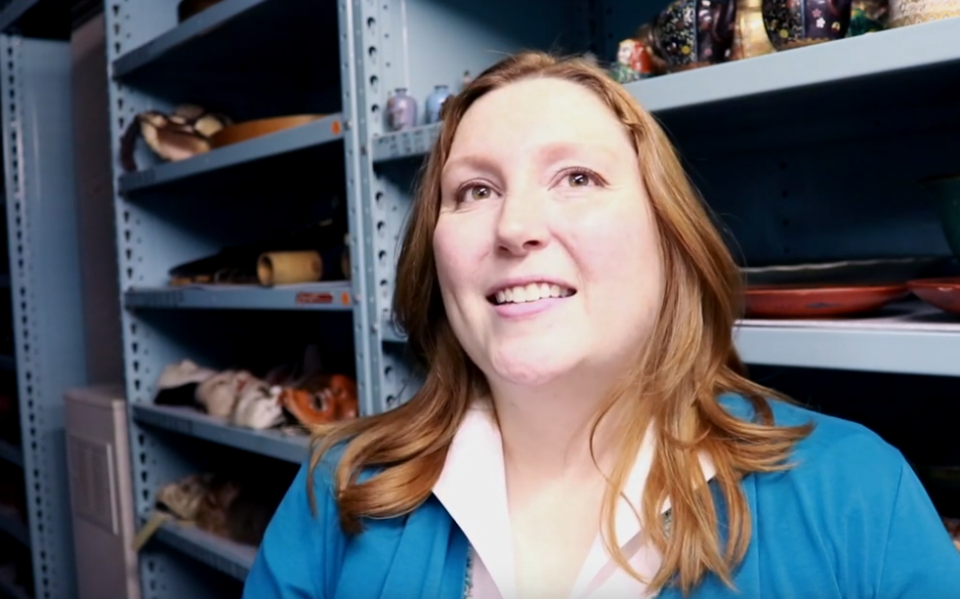
“These types of mirrors are very, very rare,” Moriarty said, noting the only other ones like it in the nation are at the Cincinnati Art Museum and Metropolitan Museum of Art in New York. There are about 24 around the world, she said.
It was donated to the Putnam in 1914 by Charles Ficke (1850-1931), an attorney and a former Davenport mayor, among a large number of East Asian artifacts.
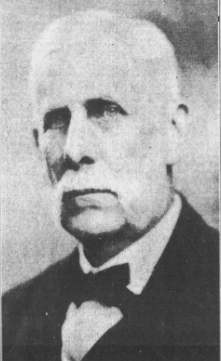
“He understood that he had immense privilege in the ability to travel the world, and he also knew that a lot of people from his hometown of Davenport, Iowa didn’t have that ability,” Moriarty said. “He wanted to give back to his community by sending back these items he purchased overseas, so he could bring the world to Davenport and the Quad-City region.”
The mirror was made from two bronze plates. If they could be split, you would see on the back of the polished mirror side, there is a raised image of Buddha.
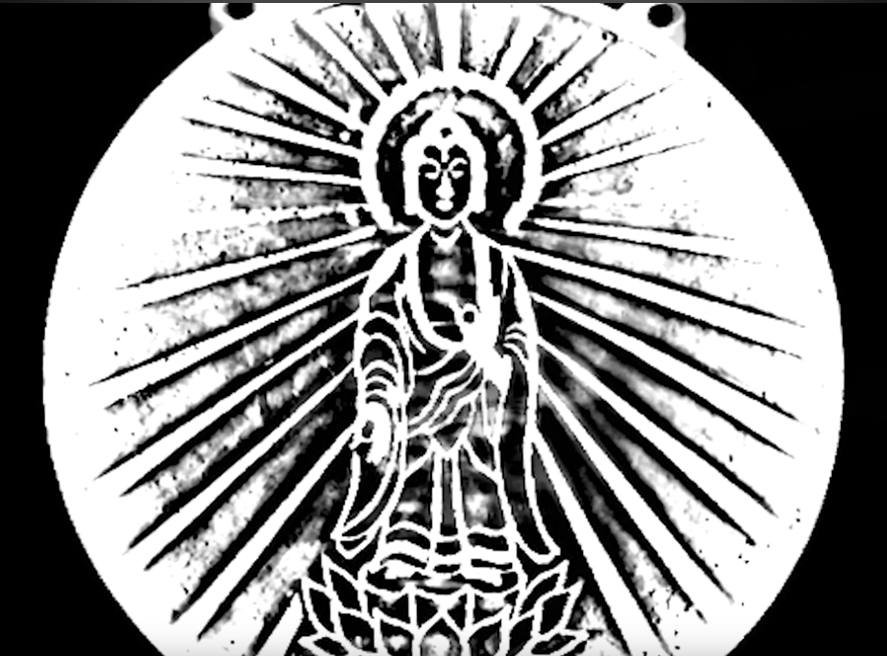
The act of polishing the mirror surface, the pressure changed very minutely how the surface reflects light, Moriarty said.
When Ficke donated the mirror, he wrote in his ledger after his 1904-05 tour of Japan and China, with a list of everything he acquired. That mentioned the “magic mirror, very old, purchased in 1904,” Moriarty said. The card catalog at the Putnam for the mirror just says “bronze mirror, Japanese.”
“So 100 years go by and this mirror is sitting in our collection at the Putnam Museum and we don’t realize what it is,” she said. “It never occurred to us, after these decades, to shine a light on it and reflect it on a white surface and have these perfect conditions for reflecting the image of Buddha.”
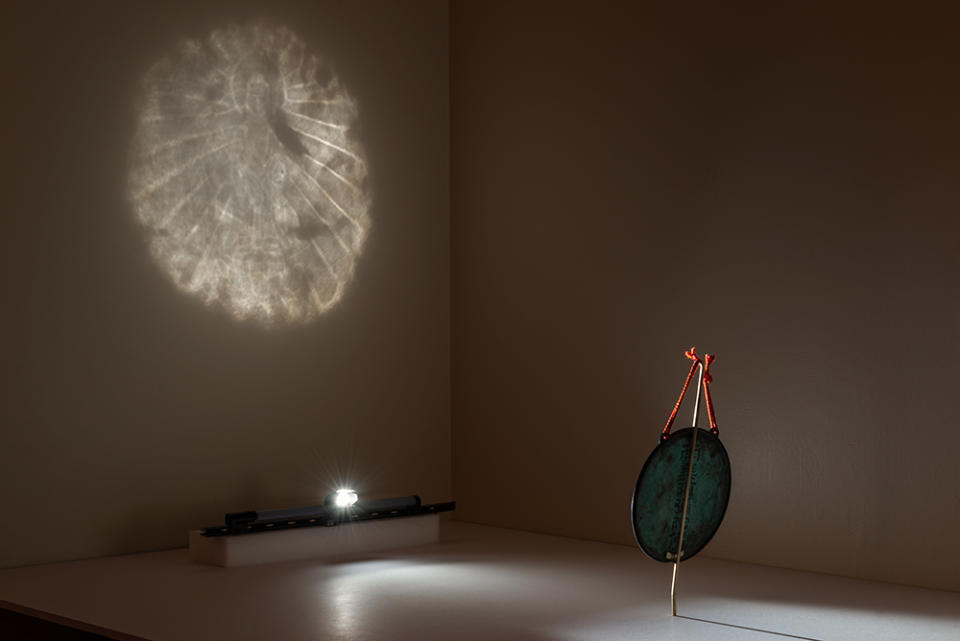
It wasn’t until a discovery of a similar mirror at the Cincinnati Art Museum in 2022 that the Putnam checked its mirrors, Moriarty said.
They have several bronze mirrors that were brought back by Ficke to the Putnam. Looking at photos of the Cincinnati magic mirror, Moriarty noticed a red silk cord theirs had, and she recalled at the Putnam shelves, one mirror had a red cord.
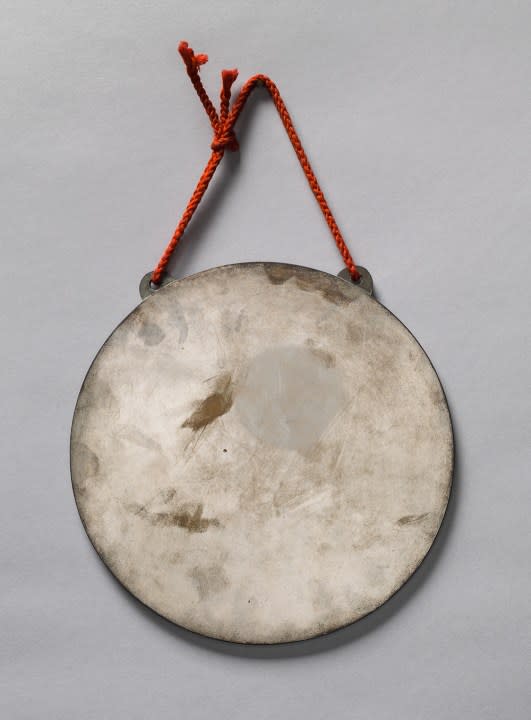
“I pulled out the mirror and realized it looked remarkably similar to the one from Cincinnati, and started to go, ‘Stay calm, Nora, it’s probably not’,” she recalled. “It took some trial and error to find the right lighting conditions, the right focus, the right temperature of light and the right surface. And that was the moment I realized, we might actually have something here. We had a magic mirror.”
A Genesis CT scan
With the help of Putnam trustee Heather Dunn, Moriarty connected with Genesis Health System staff to arrange for a CT scan of the mirror, to authenticate the Buddha image.
“They were so wonderful to work with, they were excited to help,” she said of Genesis. “They’re not often asked to scan a historic bronze artifact.”
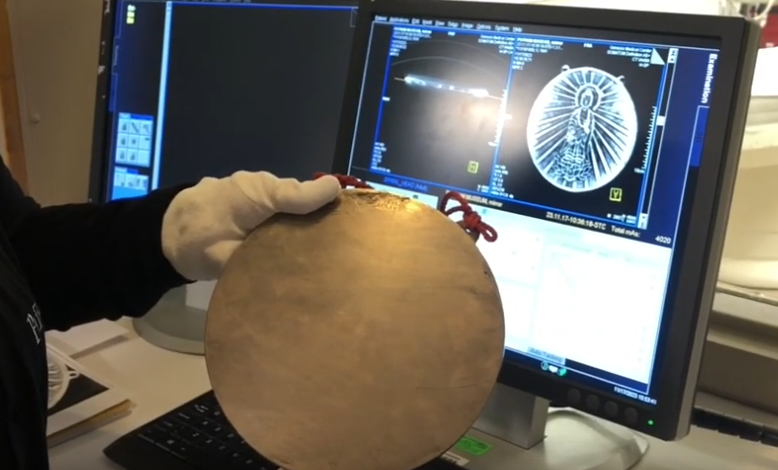
They connected with the conservator from the Cincinnati museum, to get the specifics on how to authenticate the mirror from the CT scan, Moriarty said, noting they watched the images come in during that scan.
“It was a very exciting day,” she recalled. “We were pretty sure we had a magic mirror on our hands, but the CT scan was what was going to give us irrefutable evidence.”
That allowed them to see with much more clarity what the Buddha design looked like.
“Thanks to Genesis and the CT scan, we could now see inside this mirror and see the detail of the work the creator did,” Moriarty said.
Engraved in Chinese
The magic mirror is engraved on the back in Chinese characters reading “Homage to Amitābha [Buddha].”
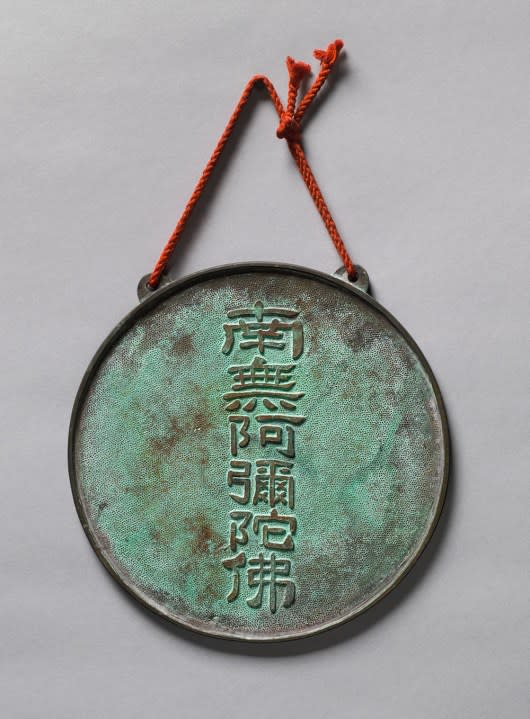
These mirrors were popular in Japan during the Edo and Meiji periods (from the 17th to 19th centuries), and are exceedingly rare as they were difficult to make and possibly expensive to purchase, according to the Putnam.
Charles Ficke also was a founder of what is today’s Figge Art Museum, Davenport. His art collection of 334 European and Mexican paintings was the founding donation for the Davenport Municipal Art Gallery. The gallery was established in 1925, with state legislation after the donation, the precursor for the current Figge Art Museum (225 W. 2nd St.).
The Magic Mirror at the Putnam will be on temporary display beginning Tuesday, Feb. 27 for a limited time. It will eventually be moved to a permanent display during a separate project at the museum connected to the capital campaign. Interested parties can visit the Putnam’s
website to find out more about the specifics of the mirror.
The Putnam thanked Jordan Voigt, Brandi Eriksen, Vanessa Fowler of Genesis Health System for donating their time and equipment to help authenticate this discovery. They also gave special thanks to Dr. Hou-Mei Sung and Kelly Rectenwald of the Cincinnati Art Museum, and Janet Leigh Foster of the University of London for sharing their expertise.
For the latest news, weather, sports, and streaming video, head to WHBF - OurQuadCities.com.

